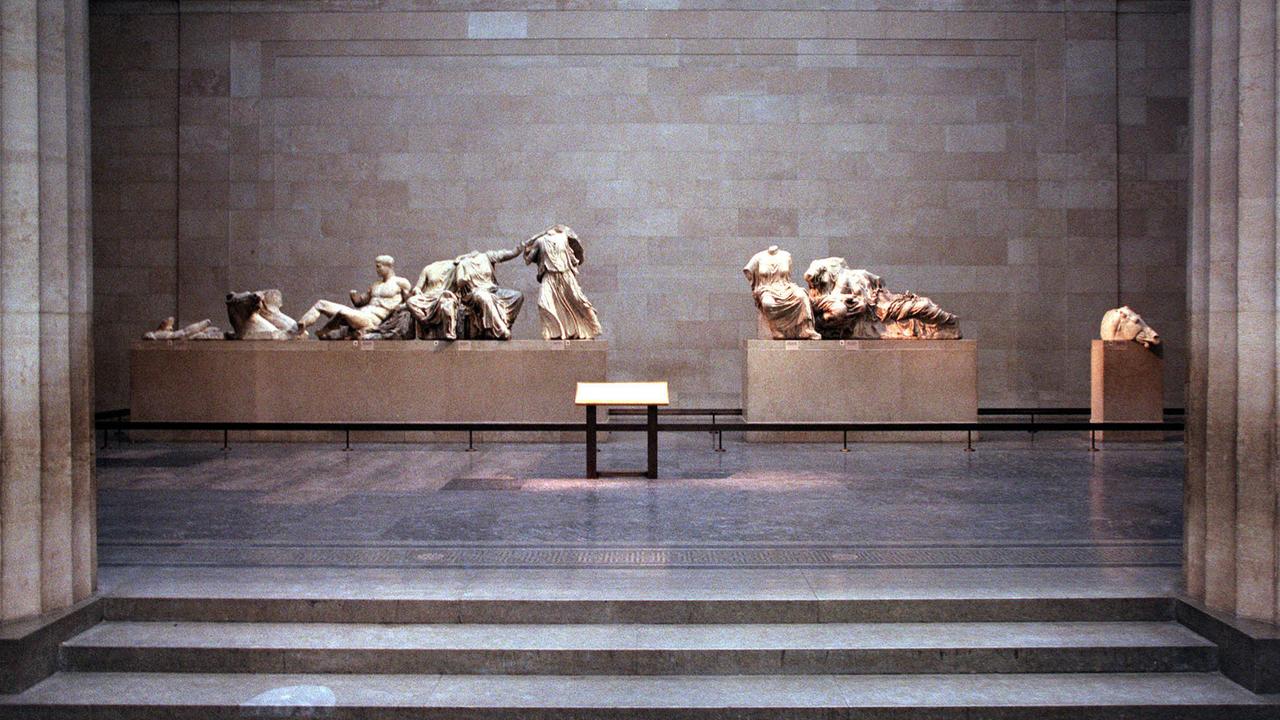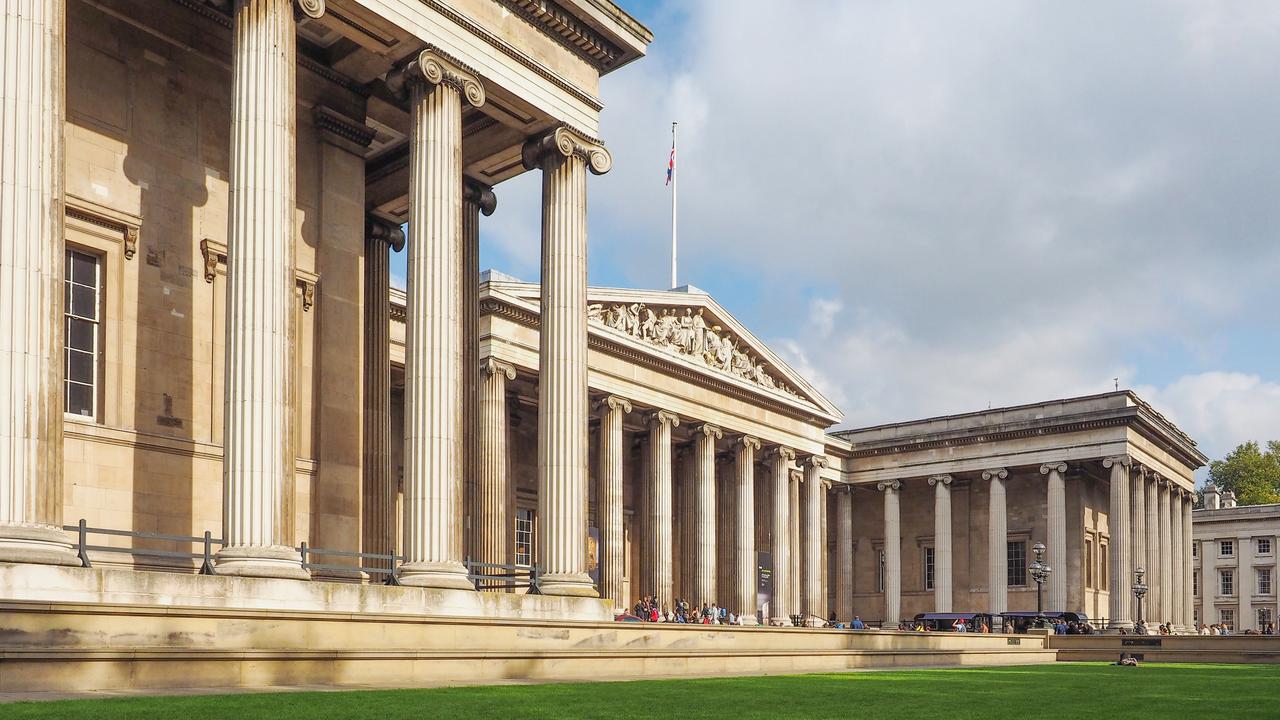Spooky goings-on at night in the museum
British Museum guards have reported spooky goings-on including ghostly footsteps, strange lights and mysterious crying among the exhibits, like a real-life version of Night at the Museum

READING LEVEL: ORANGE
British Museum guards have reported spooky goings-on including ghostly footsteps and mysterious crying among the exhibits.
Like a real-life version of the book and movies Night at the Museum (in which the ancient artefacts come alive at night), workers at the famous London, UK, museum have been seeing strange sights and hearing things go bump in the night.
There are more than eight million ancient artefacts at the British Museum, including the mummy case of an Egyptian high priestess, known as the “Unlucky Mummy” and blamed with causing catastrophes* such as the sinking of the Titanic.

Museum guards have reported doors swinging open, fire alarms sounding at midnight and chilling* music floating through the galleries of the 18th-Century building.
Others say glowing white orbs* have been spotted hovering above a staircase in the Great Court on security film.
Tourist have even reported seeing the ghost of a female dwarf in the reflection of a glass case holding a 16th-Century mechanical galleon*.
The spooky tales have been collected by artist Noah Angell, who spent four years talking to 50 employees about their experiences.

CHILLY MUMMIES
Guard Phil Heary — who worked at the museum for 29 years — said he felt the temperature drop dramatically* while in the Ancient Egypt gallery where 19 mummies were on display.
“It was like walking into a freezer,” he said.
“My stomach turned over. The feel of the gallery was – you wanted to get out. I’m a great believer that, wherever you’re buried, you should stay there. A lot of the mummies there should be back in their graves.”
The First Egyptian Room is also home to the mummy case of a high priestess of the Temple of Amen-Ra known as the “Unlucky Mummy”.
It was donated to the British Museum in July 1889 and has been blamed with causing death, injury and even catastrophes such as the sinking of the Titanic in 1912.
There have also been strange stories about the Elgin Marbles, which were removed from the Parthenon in Greece in the 1800s.
According to legend among workers, the sculptures were heard weeping inside the crate as they were moved to the UK.

GHOST STORIES
Other guards said they have bolted the doors to the Sutton Hoo gallery of European history, just to find they were wide open moments later.
One worker said they heard fire alarms ringing out through the museum after pointing at the figure of a two-headed dog made in the 19th Century.
And in the dead of night, the overnight security team heard an alarm sound from a bathroom above the staircase in the Great Court.
A security camera operator then told them there were large balls of white light floating above the steps, but the guards couldn’t see anything.
Spooked employees at the time believed the orbs could be connected to a white, wrought-iron gate from a concentration camp* in Germany which formed part of an exhibition in 2014-15.

COLLECTING STORIES
Mr Angell first began investigating the goings-on at the museum in 2016 after hearing the stories at a pub in London.
He said: “I thought that there would be a half dozen or so stories which everyone knows, and they circulate around the museum, and little variations and mutations* are created.”
But he found there were many more strange tales than he expected.
Jim Peters, collections manager at the Britain, Europe and Prehistory department, said he “agrees to a certain extent” there could be “restless objects” inside the museum.
The British Museum was established in 1753.
It is currently closed due to COVID-19 restrictions but there are many ways to experience this and other museums online, including on Google Street View.
Visit britishmuseum.org
This story was first published on The Sun and is republished with permission.
GLOSSARY
- catastrophes: disasters
- chilling: makes you feel cold it is so scary
- orbs: spheres
- galleon: sailing ship from the 1400s and 1500s
- dramatically: suddenly or by a lot
- concentration camp: prison camps run by Germany during WWII
- mutations: changes, in this case meaning stories changing as they are passed from person to person
EXTRA READING
Titanic’s Egyptian mummy and other famous curses
Deadly curse feared as King Tut’s coffin moved
Mystery coffin found in Ancient Roman temple
Take a virtual tour around the world
QUICK QUIZ
- When did the Titanic sink?
- How many items are there in the British Museum?
- What appeared to be floating up the staircase?
- When did Noah Angell first hear spooky stories about the museum?
- Does anyone know for sure the spooky things are actually spooky things happening and not just stories?
LISTEN TO THIS STORY
CLASSROOM ACTIVITIES
1. Write a conversation
Pretend you are a security guard who witnessed one of the events mentioned in the article.
Write a conversation between you and a co-worker or family member, trying to explain what you saw or heard.
In the conversation, explain where you were, what you saw, what you heard and how it made you feel. Use adjectives to help create a picture of the experience you are describing.
Time: allow 20 minutes to complete this activity
Curriculum Links: English, Personal and Social Capability
2. Extension
Write your own short story version of Night at the Museum, even if you haven’t read the book or seen any of the movies (you don’t need to have this prior knowledge, just imagine what might happen when things come alive at night in a museum). Your story can be set at the British Museum or another museum or gallery you are familiar with. Be inspired by one of these unexplained events or come up with your own ‘spooky’ experience for your story. Use descriptive words to create a ‘spooky’ feel to your story.
Time: allow 30 minutes to complete this activity
Curriculum Links: English
3. Extension
Choose one of the artefacts mentioned in the article and write down all the things you know about it – from your prior knowledge and from the article.
Can you find out any more information about this artefact? Where is it from (which country)? Which historical period is it from? Why is it significant? What can we learn from it? Is there any controversy surrounding it?
Use your prior knowledge, the article and any further research to write a paragraph explaining what the artefact is, where it is from and what its significance is.
Time: allow 30 minutes to complete this activity
Curriculum Links: English, Humanities and Social Sciences – History
VCOP ACTIVITY
Punctuation Thief
Pick a paragraph from the article, or about 3 sentences together if that’s easier, and rewrite it without the punctuation. At the bottom of the page write a list of all the punctuation you stole and in the order you stole it. For example; C , . C .
Then swap your book with another person and see if they can work out where the punctuation needs to go back to.
Make it easier: Underline where you stole the punctuation from but don’t put the list at the bottom in order.
Make it harder: Don’t put the punctuation in order at the bottom.
Underline where you took the punctuation from, but don’t tell them what pieces you took.
Just tell them how many pieces you took, but not what they are.
Don’t give them any clues!
HAVE YOUR SAY: What would you like to see at night in a museum?
No one-word answers. Use full sentences to explain your thinking. No comments will be published until approved by editors.

